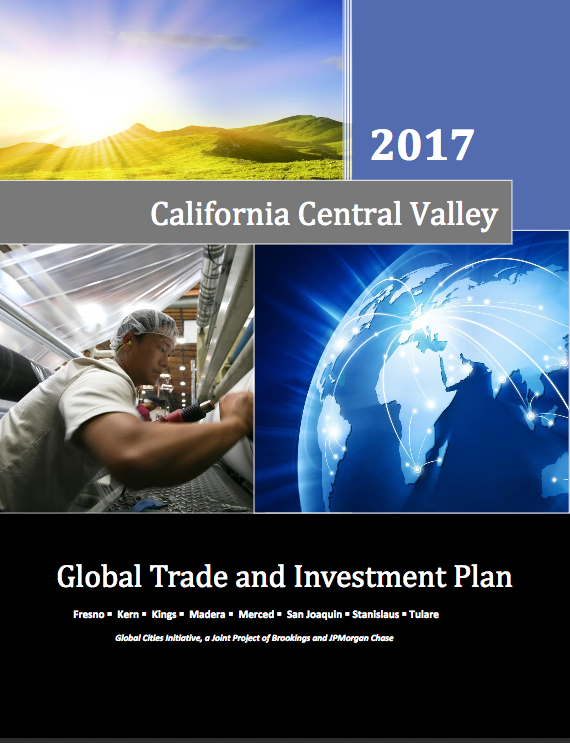
Written by
Back in 2014, the Fresno County Economic Development Corp. joined the Global Cities Initiative, a partnership with similar organizations in more than 30 metropolitan areas around the country to promote increased foreign exports of goods and services.
That resulted in the EDC generating a 2016 report on where the eight Valley counties were falling short on exports and offered strategies to fill those holes that included making businesses aware of what help is available to get them into global markets.
Last week, the EDC launched the second phase of that effort by posting on its website a new report that includes ways to promote foreign investment in Valley businesses as another way to promote exporting.
“Together they form a complete international trade and
investment strategy and a comprehensive guide to addressing and increasing the global visibility and fluency of the California Central Valley,” states the 28-page California Central Valley Global Trade and Investment Plan.
It goes on to say that the Valley counties from Tulare and Kings north to Stanislaus — referred in the EDC report as the “Fresno Metro Area” — are among 17 in the Global Cities Initiative chosen to go beyond the original parameters of finding ways to increase exports to also develop plans to promote foreign direct investment into local businesses.
“Going global has benefits, particularly for mid-sized firms — higher revenues, higher wages, higher growth projections. It also has benefits for manufacturing and services firms,” said Marek Gootman, noting that during the recession, firms that exported tended to have increased trade, unlike those that did only domestic sales.
Gootman, the keynote speaker at the EDC’s annual Investors Meeting Tuesday at the Pacific Southwest Building in Downtown Fresno, added that “Foreign direct investment brings huge economic benefits through the injection of knowledge, technology and networks,” the latter of which involves the knowledge of foreign markets and the know-how to bring goods made by U.S. businesses into those markets.
Gootman is a fellow and director of strategic partnerships and global initiatives for the Brookings Institution, a nonprofit Washington, D.C. think tank that conducts in-depth research on solving societal problems. His organization is running the Global Cities Initiative in partnership with global financing giant JP-Morgan Chase & Co.
Foreign direct investments already are the primary generator of U.S. exports, resulting in one in five manufacturing jobs here, Gootman told the audience of about 300 people gathered at the Pacific Southwest Building ballroom.
And businesses with foreign direct investments tend to pay higher wages to U.S. workers and grow productivity because of what they bring to companies here, he said. “They’re bringing these assets to — especially midsized — firms to help them enter the international marketplace and be more competitive.
“These kind of firms are critical to our global competitiveness, and we should be excited about foreign firms coming in to invest here.”
The vast majority of foreign investments in U.S. businesses aren’t always apparent — like Toyota building a new plant. Instead, most involve quiet mergers and acquisitions, where the involvement of foreign partners and owners aren’t so obvious to the general public.
He cited the case of Jim Beam being acquired in 2014 by Japanese spirits giant Suntory Holdings for $13.6 billion, raising concerns — especially in the company’s home state of Kentucky — that the sale would lead to the downfall of the iconic American business.
“Well, after much angst about this, they had to double the size of the Maker’s Mark Distillery right there in Kentucky. Why? Because they were selling a heck of a lot more bourbon to Asia,” thanks to Suntory’s access to that market, Gootman said.
“That’s the advantage of these kinds of opportunities.”
As for the EDC report, it states, “It is particularly important for economic developers in the California Central Valley to understand the role that global connectivity, global diversification and innovation play in economic growth and sustainability. The region has lagged behind the nation and the rest of the state in boom times and recovered more slowly from recessions.
“The potential for export and [foreign direct investment] development in manufacturing and services is vital to the Central Valley in terms of high-value employment and wages. There is the opportunity to address the lag in median income for the region; considering firms that export pay 20 % higher wages, and that foreign-owned enterprises pay wages 30% higher than average and provide local sites with ample expansion resources,” it continues.








